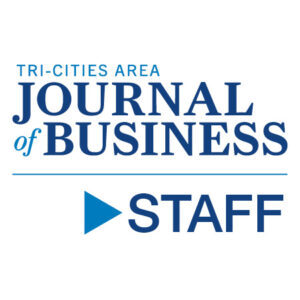
Home » State schools superintendent gives state of K-12 education
State schools superintendent gives state of K-12 education

January 12, 2022

State schools Superintendent Chris Reykdal recently provided an update on Washington’s K-12 public education system, as well as his vision for transforming the last two years of high school.
The Jan. 7 address was the first of what will be an annual update on Washington’s K-12 schools from the superintendent.
In his address, Reykdal provided updates on graduation data for the Class of 2021, data from the fall 2021 state assessments, information about rising Covid-19 cases and the impact on schools, as well as his vision for changes to high school, supports for educators and how new investments can be leveraged to support students.
“Over the past two years, our students, educators, and schools have had to be very flexible,” Reykdal said. “We have learned so much throughout the pandemic and we need to seize this opportunity to make the change needed to support the success of each and every one of our students.”
Here’s a roundup of the topics he covered:
Covid-19
Covid-19 cases statewide and nationally are continuing to increase, and public health experts expect a peak in late January before case counts decline. As cases increase, some school districts may need to temporarily switch to remote learning due to quarantine and illness, he said. Given widespread vaccinations and the effectiveness of health and safety measures in schools, OSPI does not expect we will experience statewide school building closures like those in 2020.
Mental health
The pandemic has had an impact on our students’ mental health and well-being, as they have experienced isolation, loss of loved ones and adjusting to new ways of learning, he said. OSPI is asking the state Legislature for additional investments for staff in schools dedicated to supporting students’ physical and mental health, as well as their learning recovery and acceleration.
2021 graduation data
The graduation rate for the Class of 2021 remained steady at 82.5%, a 0.4% decline from the Class of 2020.
Data show that some opportunity gaps are closing, as the graduation rate increased for Black/African American students (+1.4%), Asian students (+1.1%), and students who are multilingual/English learners (+0.5%).
However, some opportunity gaps persist, as the graduation rate decreased for students from low-income homes (-1.1%), Native Hawaiian/Other Pacific Islander (-2%), Two or More Races (-2.1%), in Foster Care (-2.1%), and American Indian/Alaska Native (-2.7%).
In addition, data show an increasing number of American Indian/Alaska Native students and students who are migratory who didn’t graduate with their 4-year cohort are staying enrolled to complete their studies and earn their diploma.
Fall 2021 assessment data
To make the most of limited in-person learning time for students last spring, OSPI moved spring 2021 assessments to the fall. Because students were assessed at a different time of year and in a different school year than when they learned the content, caution should be used when comparing results from this fall to previous or future years.
Data from this fall show slight decreases in English language arts scores from 2019, with larger score decreases in math. In addition, data indicate the pandemic aggravated opportunity gaps for some students, including students in families with lower incomes and students who are multilingual.
Given the fact that students are learning in-person, as well as the emphasis schools are placing on social-emotional well-being and learning recovery and acceleration, OSPI expects scores from this spring to show progress.
School funding
Over the past few years, legislators have made great progress in funding our K-12 schools, he said. According to an annual national analysis, Washington is rapidly approaching the national average in funding effort for schools (measured by the percentage of Gross State Product (GSP) invested in public K–12 schools) – the state is now at 3.23% of GSP spent on public education; the national average of 3.45%.
Flexibility in grades 11-12
The pandemic called upon us to provide our students with more autonomy over their learning. Students should be able to leverage their last two years of high school to prepare them for their next steps after graduation. Over the last decade, high school students have reported in greater numbers feeling a disconnect between what they are learning in school and what they will need to know throughout their lives. OSPI is requesting a bill this legislative session to provide flexibility over credit requirements to students in grades 11 and 12.
Additional transformation
As our students become more diverse, our educators must mirror that – and the racial diversity of our educators has increased steadily over the last five years. OSPI is continuing to advocate for evidence-based strategies to recruit and retain educators of color, he said. In addition, Washington is making progress in other key areas, including expanding dual language programs, rethinking school calendars to better meet student needs, and more.
K-12 system governance
Currently, several different boards and commissions govern Washington’s K–12 school system, which is often confusing and duplicative for school districts. It also hinders our ability to set and make progress on a statewide vision for our students. A bill is expected to be introduced this legislative session that would turn the state superintendent into a governor-appointed position, which Reykdal said he supports.
To watch Reykdal's press conference, go to: https://tvw.org/video/office-of-superintendent-of-public-instruction-press-conference-2022011049/?eventID=2022011049.
Local News
KEYWORDS january 2022





